Tabs 1
- Gloveboxes
- Battery Cycler
- PEM Electrolyser Test System
- EC Mass Spectrometry
- FT Infrared Spectrometer
Gloveboxes
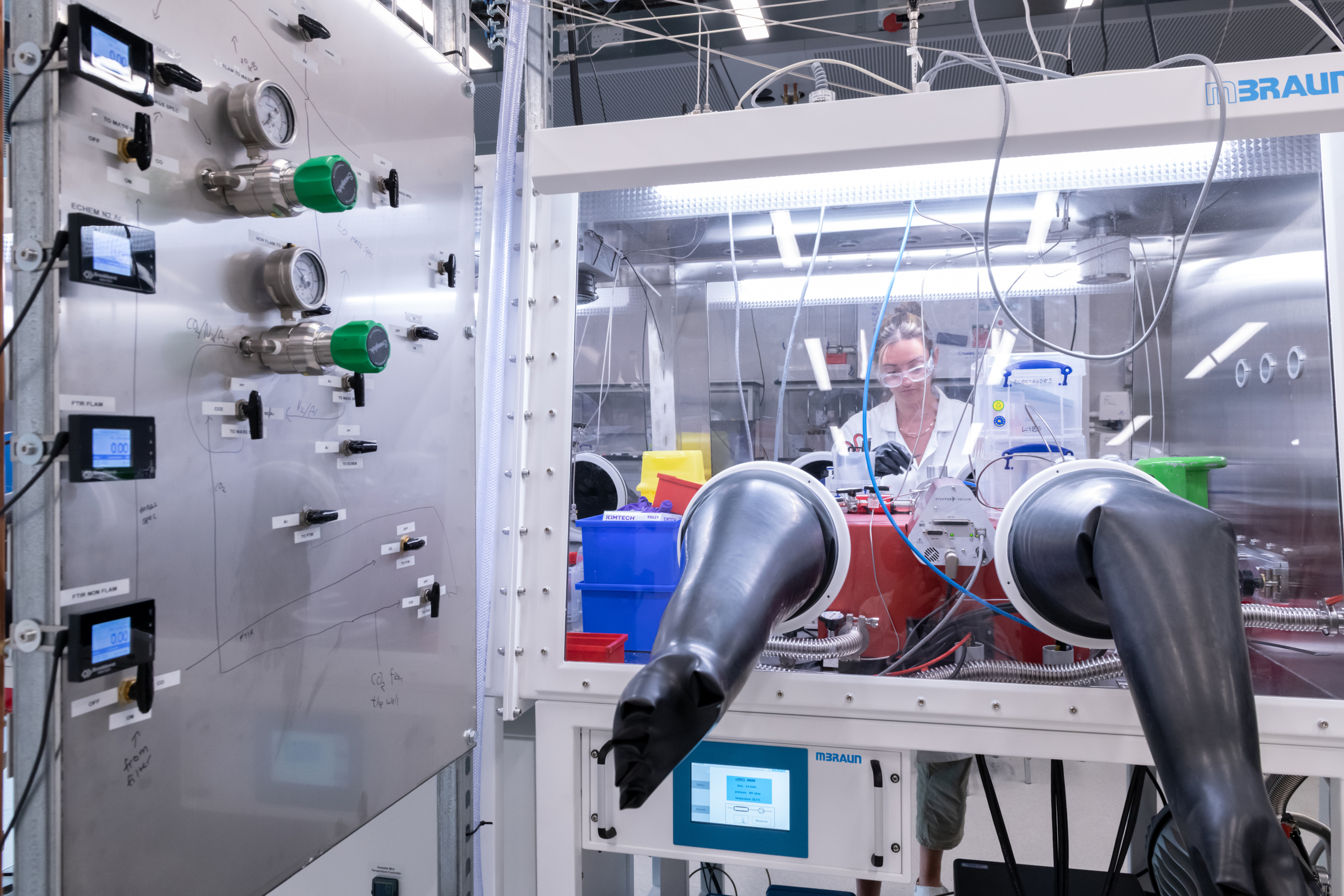
MBraun UNIlab Pro; MSRH B02
- Working Gas: Argon (with O2 and H2O < 0.1 ppm);
- Dedicated Use: Lithium-mediated N2 reduction
- Dimensions: 2500 mm (L) x 920 mm (H) 1000 mm (D) User Ports:
- User Ports: 4 gloves (same side)
MBraun UNIlab Pro; RSM LG27
- Working Gas: Argon (with O2 and H2O < 1 ppm)
- Dedicated Use: Battery materials research (specifically Na-ion, Li-ion and LiS).
- Dimensions: ~1250 mm (L) x 920 mm (H) 1000 mm (D)
- User Ports: 4 gloves (on opposing sides)
Battery Cycler
PEM Electrolyser Test System
EC Mass Spectrometry
FT Infrared Spectrometer
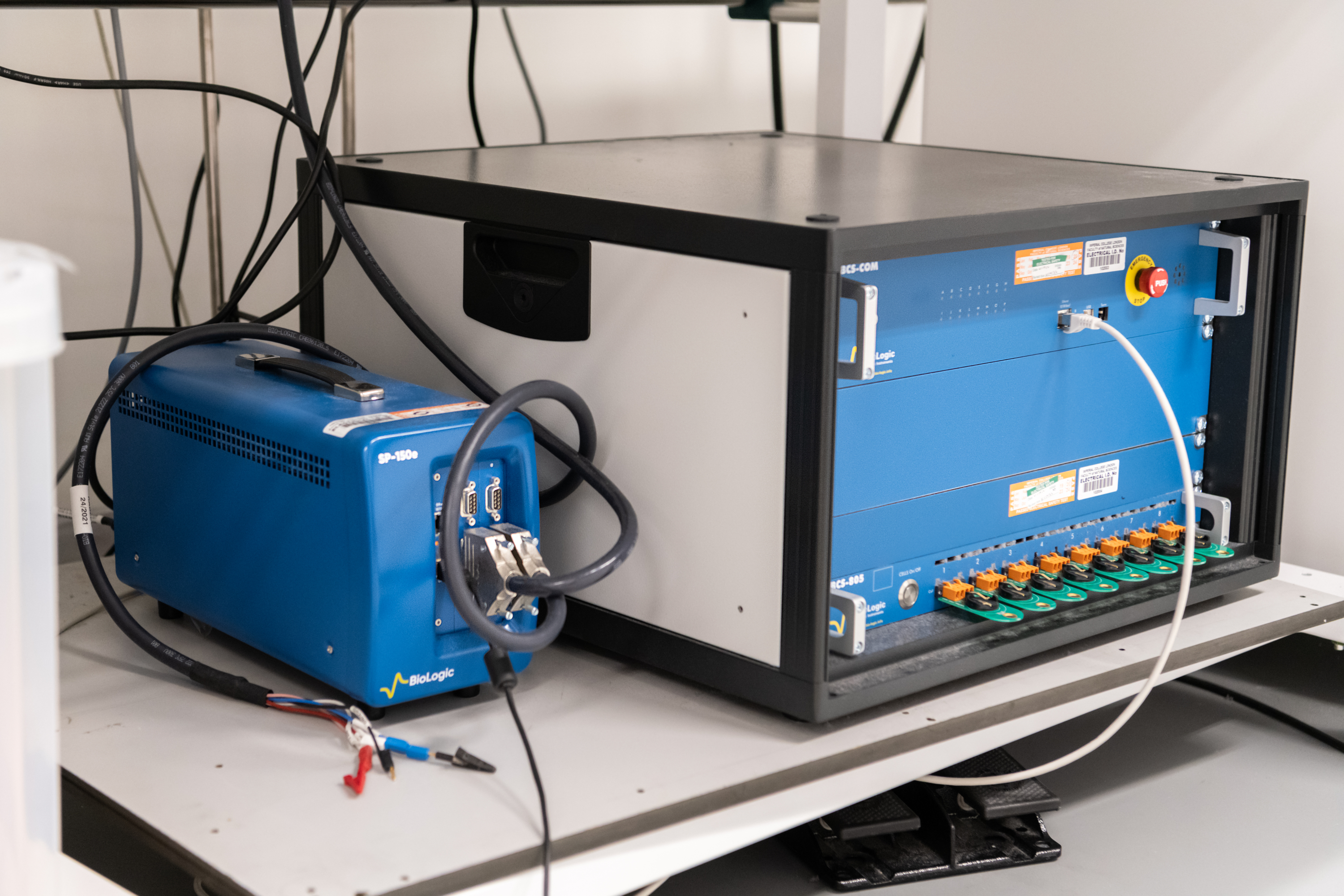 Biologic BSC-805 Battery Cycler; RSM LG27
Biologic BSC-805 Battery Cycler; RSM LG27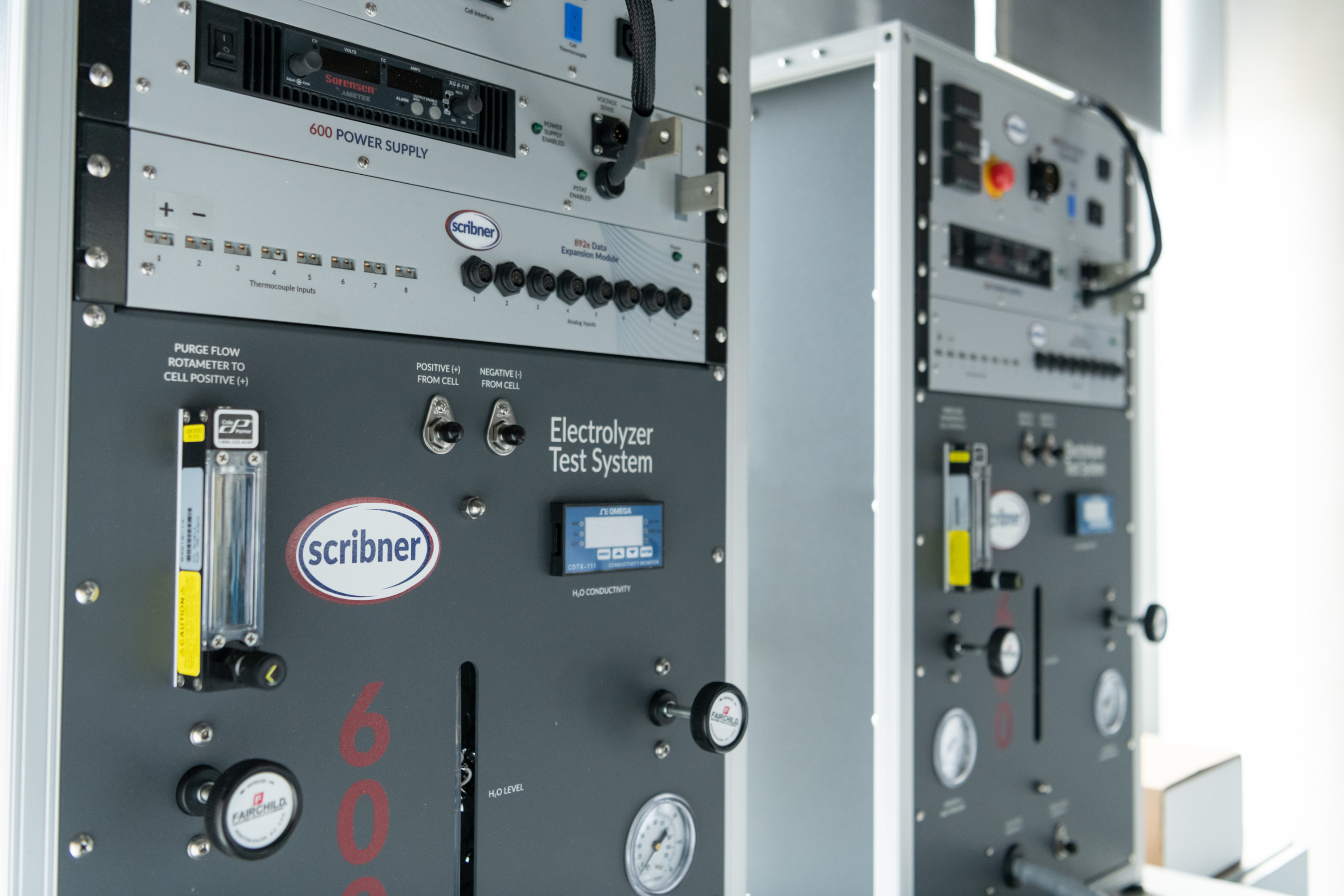 600 ETS Electrolyzer Test System; Michael Uren Hub L8 Royce Imperial Facility
600 ETS Electrolyzer Test System; Michael Uren Hub L8 Royce Imperial Facility
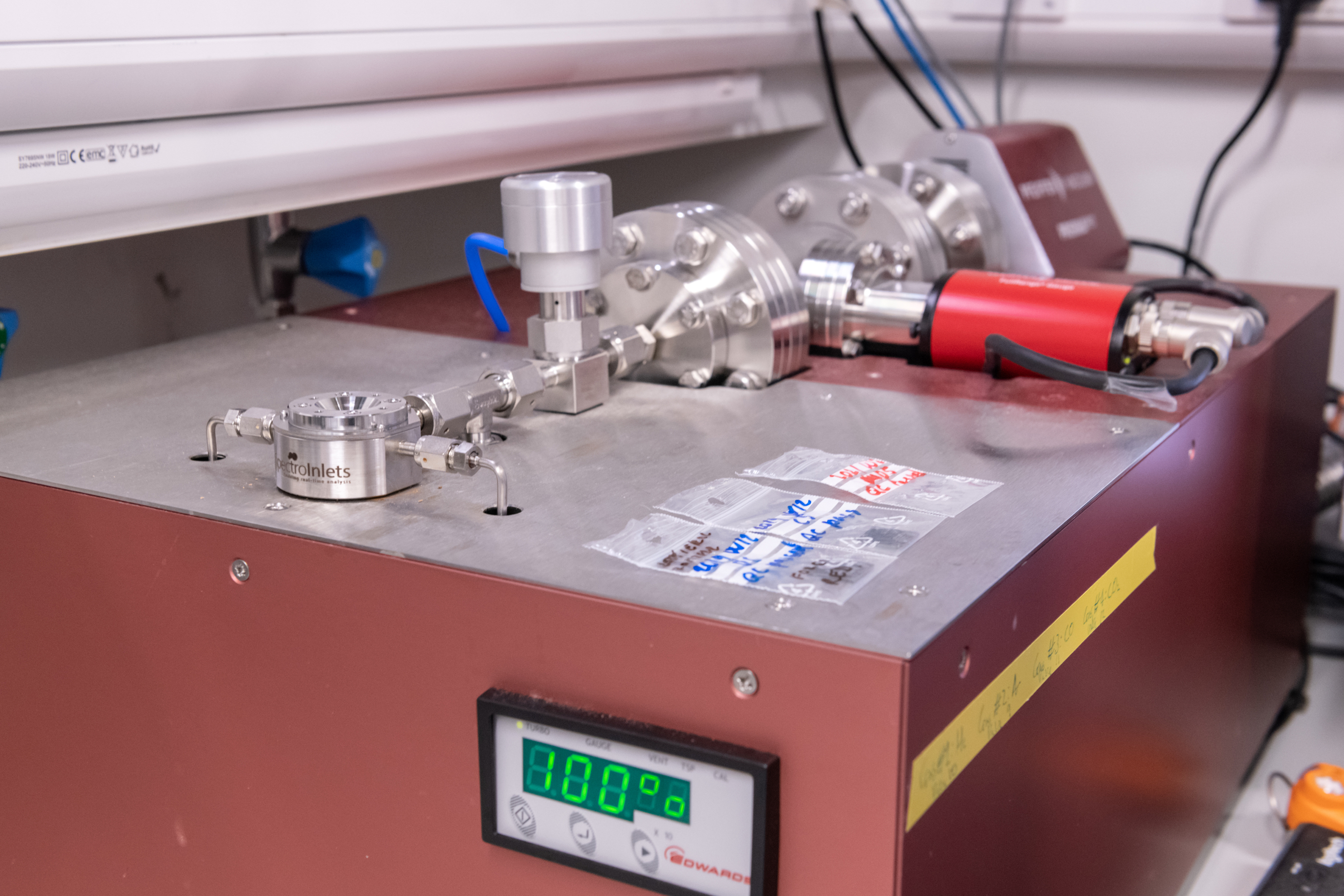 Electrochemical Mass Spectrometry
Electrochemical Mass Spectrometry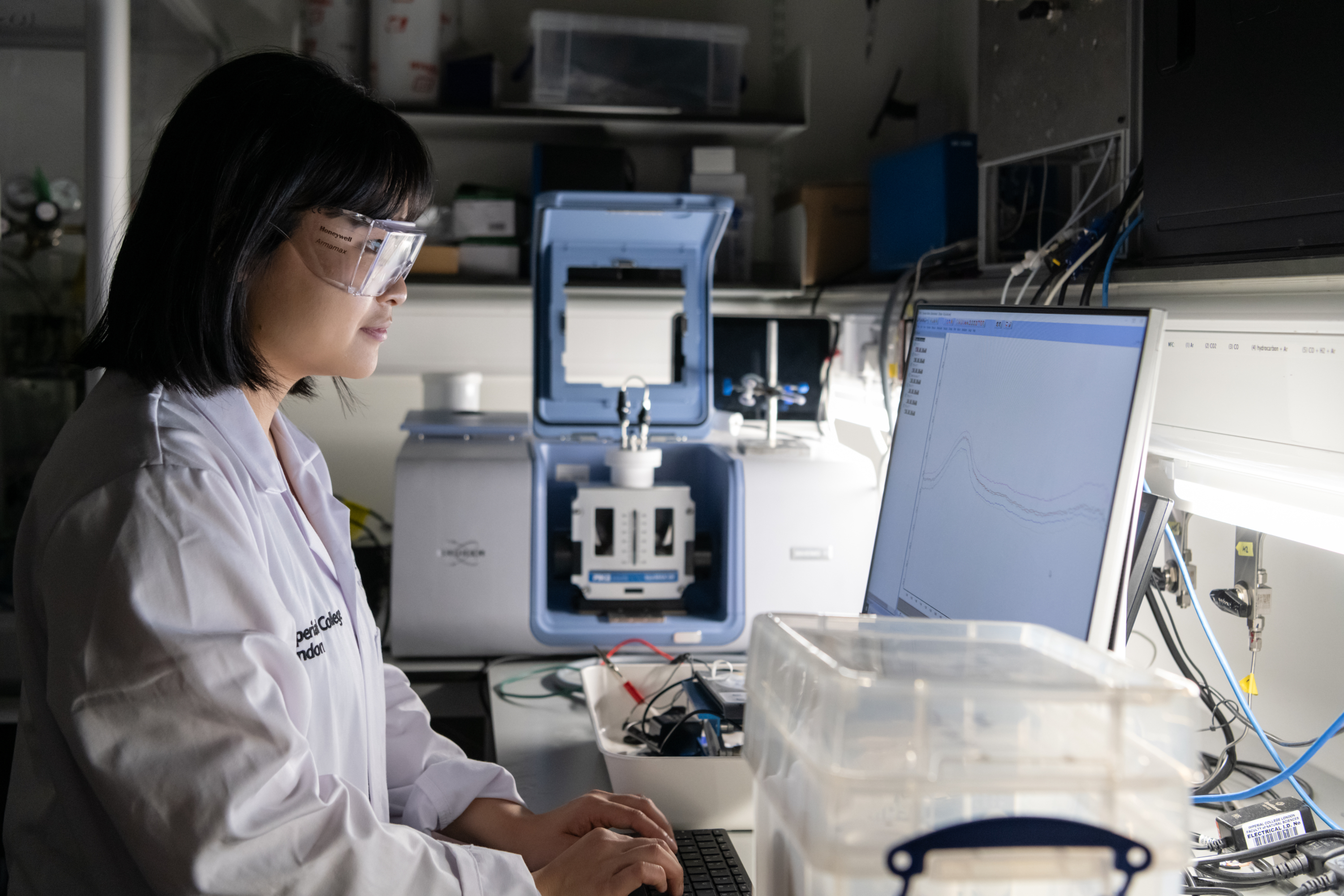 Surface-enhanced infrared absorption spectroscopy - Fourier Transform Infrared Spectrometer
Surface-enhanced infrared absorption spectroscopy - Fourier Transform Infrared Spectrometer